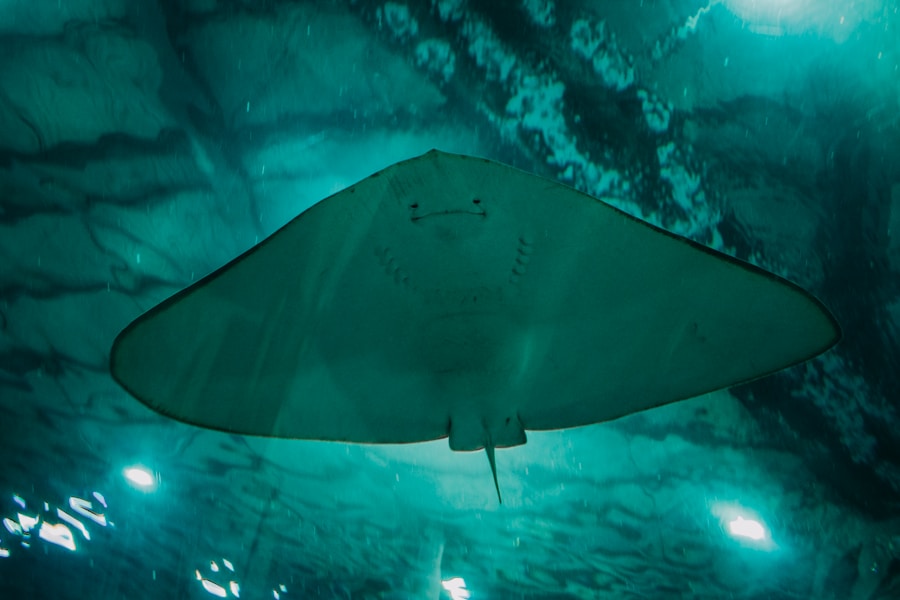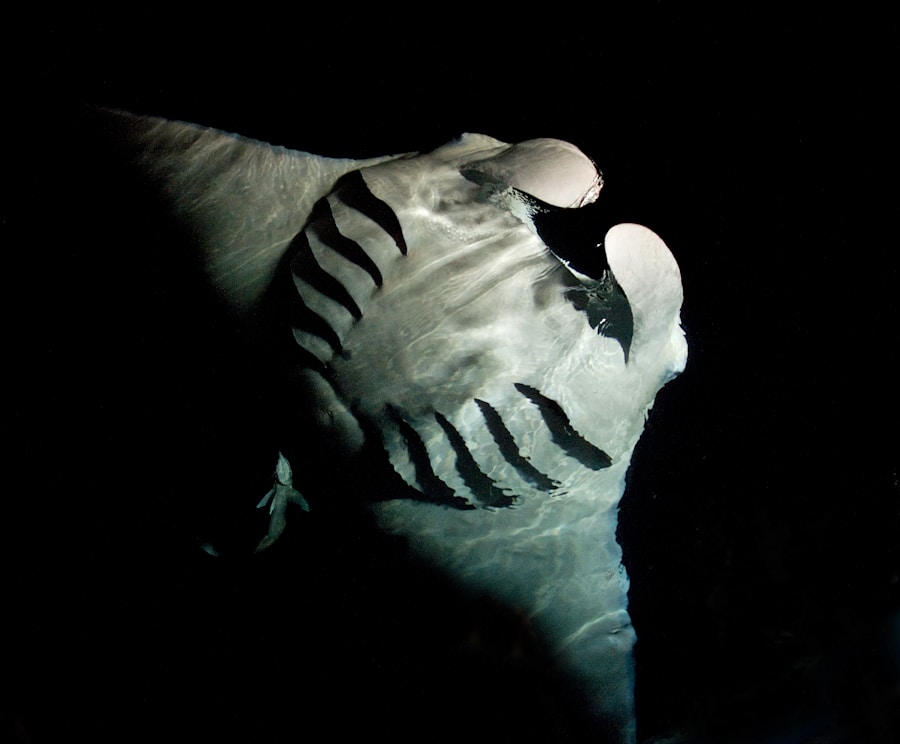When you think of Godzilla, the iconic image that often comes to mind is that of the towering monster, with its unmistakable dorsal fins slicing through the water or rising ominously against the skyline. These fins are not just a physical characteristic; they symbolize the very essence of Godzilla’s identity. They serve as a visual representation of power, resilience, and the creature’s connection to both nature and destruction.
As you delve into the history of Godzilla, you’ll discover how these dorsal fins have evolved alongside the character, reflecting changes in societal attitudes, cinematic technology, and storytelling. The dorsal fins are more than mere appendages; they are a narrative device that conveys emotion and intent. From the original 1954 film to the latest adaptations, these fins have played a crucial role in defining Godzilla’s presence on screen.
They have become a canvas for artistic expression, showcasing the evolution of design and special effects over the decades. As you explore each era of Godzilla’s cinematic journey, you’ll see how these fins have transformed, mirroring the cultural shifts and technological advancements that have shaped the monster’s legacy.
Key Takeaways
- Godzilla’s dorsal fins are a distinctive feature of the iconic monster, and have evolved over the years in various iterations.
- The original Godzilla, introduced in 1954, had small, jagged dorsal fins that were a defining characteristic of the creature.
- In the Showa era of the 1960s-1970s, Godzilla’s dorsal fins became larger and more pronounced, reflecting the changing design trends of the time.
- The Heisei era of the 1980s-1990s saw a return to smaller, sharper dorsal fins, reminiscent of the original design.
- The Millennium era of the 2000s brought about a more streamlined and angular look for Godzilla’s dorsal fins, reflecting a modernized aesthetic.
The Original Godzilla: 1954-1955
The Birth of a Monster
Godzilla made its debut in 1954 in a film that would forever change the landscape of monster movies. The original design of Godzilla was stark and terrifying, with dorsal fins that were jagged and menacing. These fins were not just for show; they were integral to the creature’s portrayal as a force of nature unleashed by humanity’s reckless experimentation with nuclear power.
### A Symbol of Dread
As you watch this film, you can feel the weight of its message about destruction and consequence, embodied in Godzilla’s fearsome silhouette. The dorsal fins in this era were designed to evoke a sense of dread. They were sharp and angular, reflecting the harsh realities of post-war Japan.
### The Power of Authenticity
The filmmakers used practical effects to create a creature that felt real and terrifying, and the fins played a significant role in that authenticity. When Godzilla emerged from the ocean, those dorsal fins cutting through the waves signified not just his physical power but also the emotional turmoil of a nation grappling with its past. This initial portrayal set the stage for Godzilla’s complex character, one that would evolve but always retain that core essence of destruction intertwined with a cautionary tale.
The Showa Era: 1960s-1970s

As you move into the Showa Era of the 1960s and 1970s, Godzilla underwent a transformation that reflected changing societal attitudes. The once fearsome monster began to take on a more heroic role, often battling other kaiju to protect humanity. This shift was mirrored in the design of his dorsal fins, which became more stylized and pronounced.
The fins began to take on a more dynamic shape, emphasizing Godzilla’s agility and strength as he faced off against various foes. During this period, filmmakers experimented with color and special effects, allowing for more vibrant depictions of Godzilla’s dorsal fins. The fins became a symbol of hope and resilience rather than just destruction.
You could see them illuminated against the backdrop of cityscapes as Godzilla charged into battle, showcasing not only his physical prowess but also his evolving narrative as a protector. This era solidified Godzilla’s place in popular culture, transforming him from a harbinger of doom into a beloved icon who fought for justice.
The Heisei Era: 1980s-1990s
| Decade | Population Growth | GDP Growth | Unemployment Rate |
|---|---|---|---|
| 1980s | 1.6% | 4.5% | 2.8% |
| 1990s | 0.5% | 1.2% | 3.2% |
The Heisei Era brought about a return to Godzilla’s darker roots in the 1980s and 1990s. This period saw a reinvention of the character, with a focus on more sophisticated storytelling and special effects. The dorsal fins during this time were redesigned to be larger and more pronounced, emphasizing Godzilla’s monstrous nature while still retaining an air of majesty.
You could feel the weight of history in these fins, as they echoed back to the original design while also embracing modernity. In films like “Godzilla vs. Biollante” and “Godzilla vs.
King Ghidorah,” the dorsal fins became integral to showcasing Godzilla’s power during battles. They glowed with energy during his atomic breath attacks, creating a visual spectacle that captivated audiences. The filmmakers used advanced animatronics and special effects to bring these fins to life, making them not just a part of Godzilla’s silhouette but an essential element of his character development.
As you watch these films, you can appreciate how the dorsal fins symbolize both Godzilla’s destructive capabilities and his role as a guardian against greater threats.
The Millennium Era: 2000s
Entering the Millennium Era in the 2000s, Godzilla’s dorsal fins took on yet another evolution. Each film in this period presented a unique interpretation of the monster, leading to variations in fin design that reflected different artistic visions. Some films opted for more streamlined fins, while others embraced a more rugged appearance.
This diversity allowed for creative storytelling that kept audiences engaged while also showcasing how versatile Godzilla could be as a character. In this era, filmmakers experimented with CGI alongside practical effects, allowing for more dynamic action sequences where Godzilla’s dorsal fins played a pivotal role. You could see them slicing through the air as he charged into battle or rising majestically from the ocean waves.
The fins became symbols of both power and vulnerability, reminding viewers that even the mightiest creatures have their limits. As you immerse yourself in these films, you’ll notice how each iteration of Godzilla reflects contemporary fears and aspirations, with his dorsal fins serving as a constant reminder of his enduring legacy.
The Legendary Era: 2010s-2020s

The Legendary Era marked a significant shift in how Godzilla was portrayed on screen, particularly with the release of “Godzilla” in 2014 and its sequels. In this era, filmmakers aimed for a more realistic depiction of the creature while still honoring its iconic roots. The dorsal fins were reimagined to be larger and more intricate than ever before, giving Godzilla an imposing presence that resonated with audiences worldwide.
These new designs emphasized not only size but also texture and detail, making each fin appear almost organic. You could see how they caught the light during battles or glistened when emerging from water, adding depth to Godzilla’s character. The filmmakers used cutting-edge CGI technology to create stunning visuals that showcased these dorsal fins in all their glory.
As you watch these films, you can appreciate how they blend nostalgia with innovation, ensuring that Godzilla remains relevant while still paying homage to his storied past.
The Anime Era: 2020s-2030s
As we enter the Anime Era in the 2020s and beyond, Godzilla continues to evolve in exciting ways. Animated adaptations have allowed for even greater creative freedom in designing his dorsal fins. In this medium, artists can push boundaries and explore fantastical interpretations that might not be feasible in live-action films.
You may find yourself captivated by how these animated versions portray Godzilla’s fins—sometimes exaggerated or stylized to enhance emotional impact or thematic depth. The anime format allows for unique storytelling opportunities where Godzilla’s dorsal fins can symbolize various themes such as isolation or environmentalism. As you engage with these narratives, you’ll notice how they reflect contemporary issues while still honoring the legacy of previous eras.
The flexibility of animation means that each portrayal can be distinct yet familiar, allowing fans old and new to connect with Godzilla in fresh ways.
The Future of Godzilla’s Dorsal Fins
Looking ahead, the future of Godzilla’s dorsal fins is as promising as ever. As filmmakers continue to explore new technologies and storytelling methods, you can expect these iconic features to evolve further while remaining true to their roots. Whether through live-action films or animated series, each iteration will likely reflect current societal concerns and artistic trends.
As you consider what lies ahead for this legendary monster, remember that Godzilla’s dorsal fins are more than just physical traits; they are symbols of resilience and transformation. They remind us that even in an ever-changing world, some elements remain constant—like our fascination with this colossal creature who embodies both destruction and hope. As you anticipate future adventures with Godzilla, keep an eye on those dorsal fins; they will undoubtedly continue to tell stories that resonate across generations.
